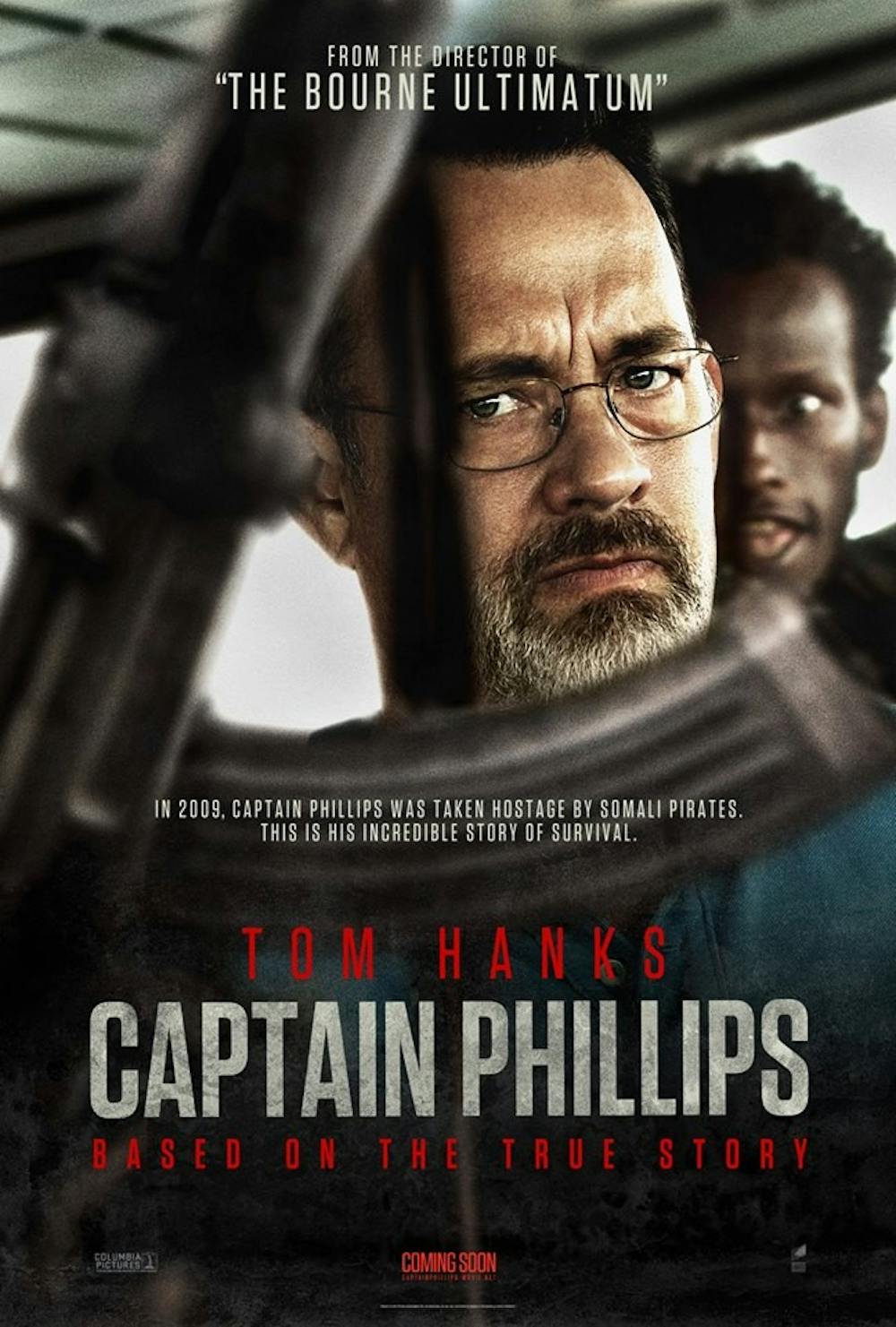True-life thriller grabs attention from start to finish
The Maersk Alabama was headed for Kenya when it was hijacked in 2009 by a band of Somali pirates. Capt. Richard Phillips (Tom Hanks) did everything he could to protect his crew and appease the pirates until the Navy could intervene.
Paul Greengrass (“The Bourne Ultimatum,” “United 93”) directed a thriller, “Captain Phillips,” on their story with impeccable precision and skill.
For 134 minutes, the film is intense and claustrophobic, quickly throwing the audience into the terror and dread that its characters felt. A knot forms in the stomach that does not let go until the final minutes of the film.
Greengrass is well-known for his use of the shaky camera technique. While most directors use this shooting style in a lazy and unjustified way, Greengrass deftly uses the hand-held camera to create a sense of urgency.
The documentary realism makes the action feel spontaneous and unstaged. Too many films have the camera whisked and jerked around just to relate “confusion” or “chaos.”
In Greengrass’s films the camera work might seem unplanned, as if the crew had no knowledge of what exactly was going to be filmed seconds before “action” was yelled, but the position of characters and their relation to their surroundings is always precisely designed.
Having an unsteady, roaming camera makes the action unpredictable and intense. It is as though a documentary cameraman was one of the hostages, and he did not know how things would turn out.
Also, since the majority of the film takes place on the container ship and later in a cramped lifeboat, the queasy motion of the camera makes complete sense.
The four main pirates are played by Barkhad Abdi, Mahat M. Ali, Barkhad Abdirahman and Faysal Ahmed. None of them had ever acted before.
Greengrass was smart not to cast known actors in those roles. If even a superb actor such as Don Cheadle was playing one of the pirates, the film’s authenticity would be greatly diminished. The characters’ history in the slums of Somalia is believable.
While films based on true stories always have to be taken with a grain of salt and should be judged as artistic representation, not factual documents, “Captain Phillips” comes across as realistic. The facts might not all line up with reality, but the emotion and power of the film remain true.
Greengrass is not bothered with making a mindless thriller with gratuitous action and hollow heroics. Phillips is shown at the beginning of the film packing his bags and saying goodbye to his wife (Catherine Keener). He was a normal man, just doing his job, when terror struck his ship that day. He was a quiet, diligent hero who survived because of his will and intelligence.
Part of what makes the whole attack so maddening is how senseless it was. The pirates were disorganized, ignorant and gullible young men who had nothing to live for except hijacking ships for money, and they caused so much pain and suffering. The one thing they had was their determination to live.
The final moments in the film release tension for both the audience and Phillips.
They show an intimate, absorbing scene that shows the frailty and humanity of the main character. Hanks deserves an Oscar nomination for Best Actor for his performance in this film; he doesn’t seem like he is acting.
Greengrass has made another film that grabs viewers, runs them through the ringer and cathartically pushes them out the other side, showing the dignity and strength of man in the face of horror.

